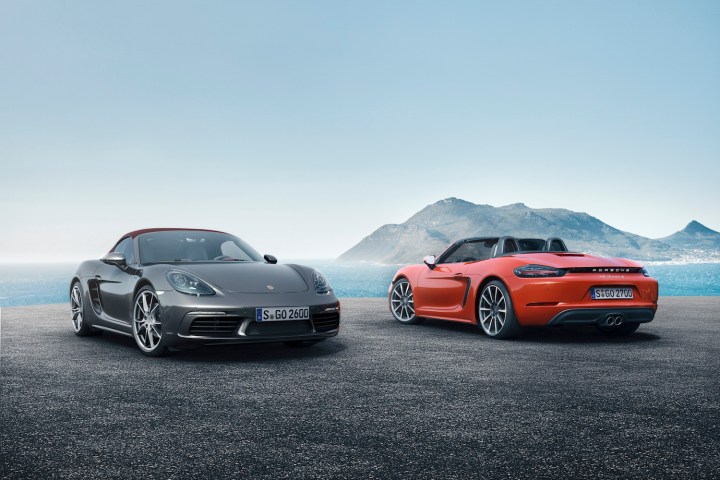
The German carmaker plans to launch entry-level versions of its 718 Boxster and 718 Cayman with less horsepower, according to Automotive News Europe (subscription required). The new versions will use a 2.0-liter flat-four engine with 250 horsepower. In the U.S., the Boxster and Cayman are offered with a 300-hp 2.0-liter flat-four, or a 350-hp 2.5-liter four.
Porsche is making this move to cut the cars’ prices. The 250-hp models will sell for less than 600,000 renminbi (about $90,000). This is a “magical threshold for customers in China, Jan Roth, head of the 718 model line, told Automotive News Europe. Cars selling for less than that amount are more popular in the country, Porsche believes. The previous-generation Cayman base model, which had a six-cylinder engine and 275 hp, sold for 700,000 renminbi.
Read more: Porsche’s Cayman GT4 Clubsport was bred for the track
Roth noted that fellow Volkswagen Group brand Audi sells a lot of entry-level TT sports cars in China with smaller engines and without the brand’s signature Quattro all-wheel drive. McLaren follows a similar strategy with its 625C, a less-powerful version of the 650S aimed at Asian markets.
China is currently Porsche’s biggest single market, but the sports cars the company is known for are not big sellers there. Porsche sells 16 times as many Cayenne SUVs in China as it does 911s. Roth believes a less-expensive, less-powerful model could boost sales of the Boxster and Cayman to 4,500 units in 2017, compared to around 2,500 units in 2015.
While cutting power may not sound heroic, if it comes with a decrease in price it could be a good idea. In the U.S., the 718 Boxster starts at $57,050 (including destination). That’s a significant chunk of change, even for what is generally recognized as a very good sports car. It would be interesting to find out if buyers would be willing to trade 50 hp for a lower transaction price.


